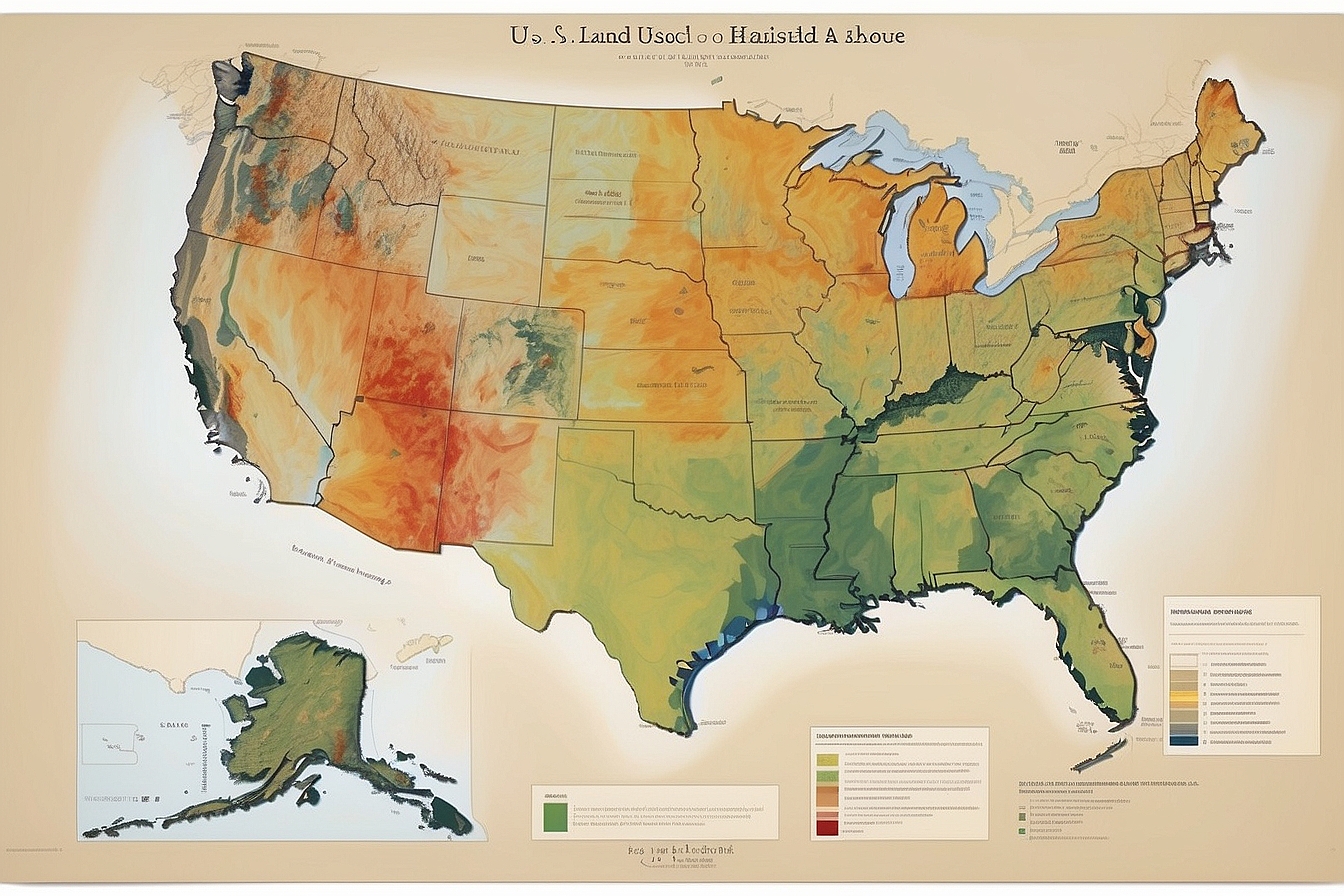As we witness the gradual disappearance of our cherished woodlands, a collective sense of unease about the destiny of our planet nestles more deeply within us. We’re not isolated in this sentiment; climate researchers have issued warnings that tropical deforestation contributes to a staggering 15% of worldwide greenhouse gas emissions.
Our team has immersed itself in research, uncovering both the causes and potential solutions, equipping you with practical knowledge to tackle this pressing problem head-on. Trees are indeed formidable allies in our fight against climate change – continue reading and join us as stewards of these green guardians for future generations!
Key Takeaways
- Deforestation is responsible for about 15% of global greenhouse gas emissions, showing how significant the problem is to our atmosphere and climate.
- Destroying forests leads to more carbon dioxide in the air and makes local climates drier and hotter, which can cause extreme weather events like droughts or heavy rainfall.
- Creating protected areas, enforcing laws against illegal logging, and collaborating with local communities are vital actions to preserve remaining forests.
- Planting new trees through reforestation and afforestation helps capture atmospheric carbon, restores ecosystems, provides wildlife habitats, improves soil quality, combats desertification, and lowers risk of natural disasters.
- Restoring degraded forest land enhances carbon storage capacity significantly helping fight climate change while also promoting biodiversity conservation.
The Role of Deforestation in Climate Change
Deforestation contributes to climate change through land use change and greenhouse gas emissions. This leads to local climate impacts and affects the balance of carbon dioxide in the atmosphere, ultimately influencing global greenhouse gas emissions.
Land use change and greenhouse gas emissions
We’re facing a serious challenge with land use change, primarily through deforestation. Forests act like the planet’s lungs, absorbing carbon dioxide and releasing oxygen. However, when we clear these forests for agriculture or construction, we not only lose this vital carbon dioxide absorption but also release stored CO emissions into the atmosphere.
It results in an increase in global greenhouse gas emissions that contribute to climate change.
Our actions are turning dense forests into fragmented landscapes, causing severe environmental degradation. Trees once stood tall and robust, locking away large amounts of carbon; now they lay as timber or burnt remains, releasing what they once contained into the air as potent greenhouse gases.
We need to acknowledge how this type of land use change accelerates global warming and work together towards sustainable land management that protects our remaining forests while still meeting human needs.
Local climate impacts
Deforestation directly affects local climates in several ways. When trees are removed, there is less transpiration and evaporation, leading to reduced humidity levels. As a result, areas that were once lush green can become arid and dry.
Furthermore, without the cooling effect of trees through shade and evapotranspiration, temperatures in deforested areas can rise significantly. This dramatic change alters the local climate patterns and could lead to increased instances of extreme weather events such as droughts or heavy rainfall.
Additionally, deforestation disrupts the water cycle by reducing the interception and storage of rainwater by tree canopies. Without this natural process, soil erosion becomes more prevalent as heavy rains wash away topsoil, degrading agricultural land and further impacting local ecosystems.
Solutions to Address Deforestation and Climate Change
Protecting forests is crucial in mitigating climate change, as healthy forests act as significant carbon sinks. Reforestation and afforestation efforts can also contribute to absorbing excess carbon dioxide from the atmosphere, while restoring degraded forests supports biodiversity and ecological balance.
Protecting forests
Protecting forests is crucial for maintaining biodiversity and mitigating climate change. Forest protection involves various measures, including:
- Setting up protected areas and national parks to safeguard important ecosystems and wildlife habitats.
- Implementing sustainable forest management practices to ensure the long – term health of forests.
- Enforcing laws and regulations to prevent illegal logging and deforestation activities.
- Collaborating with local communities to promote responsible forest stewardship and conservation efforts.
Reforestation and afforestation
Reforestation and afforestation involve planting trees in areas where forests have been lost or degraded. These activities play a crucial role in mitigating climate change and restoring ecosystems by absorbing carbon dioxide, preventing soil erosion, and providing habitat for wildlife.
- Reforestation involves replanting trees in areas where forests were previously removed. This process helps to restore the natural balance of ecosystems, improve air quality, and reduce the effects of climate change by capturing carbon from the atmosphere.
- Afforestation refers to the establishment of new forests in areas that were not previously forested. By creating new woodlands or forests, afforestation contributes to biodiversity conservation, protects watersheds, and provides economic opportunities for local communities through sustainable forest management practices.
- Both reforestation and afforestation are essential for preserving biodiversity, as they create habitats for diverse flora and fauna, contributing to the overall health of ecosystems while providing numerous environmental benefits such as maintaining water cycles, enhancing soil fertility, and reducing the risk of natural disasters like flooding and landslides.
- Furthermore, reforestation and afforestation efforts contribute significantly to reducing greenhouse gas emissions by sequestering carbon dioxide from the atmosphere, thereby helping to mitigate global warming while addressing ecological imbalances caused by deforestation activities.
- Initiatives that focus on reforestation and afforestation also support sustainable development goals by promoting ecological restoration, combating desertification, improving land productivity, and fostering resilience against the adverse impacts of climate change.
Restoring degraded forests
Restoring degraded forests is crucial in mitigating the impact of deforestation on climate change. By rejuvenating degraded forests, we can:
- Enhance carbon sequestration and storage to reduce greenhouse gas emissions, aiding in climate regulation and mitigating global warming.
- Promote biodiversity conservation and prevent wildlife extinction by providing habitats for diverse species.
- Improve ecosystem resilience and adaptability to changing environmental conditions, helping to maintain ecological balance and sustainability.
- Enhance water retention capacity of the soil, reducing the risk of flooding and ensuring a stable supply of clean water for communities.
- Contribute to sustainable land use practices, supporting local economies while preserving natural resources.
- Establish green corridors connecting fragmented habitats, facilitating wildlife movement and genetic diversity.
- Create opportunities for community engagement and involvement in forest restoration initiatives, promoting environmental awareness and stewardship.
Reducing carbon emissions from deforestation activities
To address the impact of deforestation on climate change, reducing carbon emissions from deforestation activities is crucial. This involves implementing policies and practices to minimise carbon emissions associated with deforestation. Strategies include:
- Implementing sustainable logging practices to reduce carbon emissions from timber extraction.
- Promoting the use of alternative energy sources to reduce the reliance on wood fuel, thereby decreasing deforestation for fuelwood.
- Enforcing regulations to curb illegal logging and land clearing activities that contribute to carbon emissions.
- Supporting initiatives that incentivise reforestation and afforestation efforts in areas affected by deforestation, effectively capturing and storing carbon.
Conclusion
The impact of deforestation on climate change is significant. Protecting forests, reforestation, and reducing carbon emissions are crucial solutions. We can make a positive difference by supporting forest conservation efforts.
Together, we can contribute to mitigating the effects of deforestation on our planet’s climate.
FAQs
1. What does deforestation do to our climate?
Deforestation leads to forest degradation and contributes significantly to climate change by releasing stored carbon dioxide into the atmosphere.
2. Can stopping deforestation help fight climate change?
Yes, forest conservation is crucial as it helps absorb carbon dioxide from the air, reducing the impact of climate change.
3. Why are forests important in controlling climate change?
Forests act like giant filters for our planet; they capture harmful greenhouse gases that cause climate change, making them vital for a healthy environment.
4. What can we learn from climate scientists about deforestation?
Climate scientists urge that stopping deforestation and promoting forest growth can reverse damaging effects on the climate, signaling an urgent need for action.





